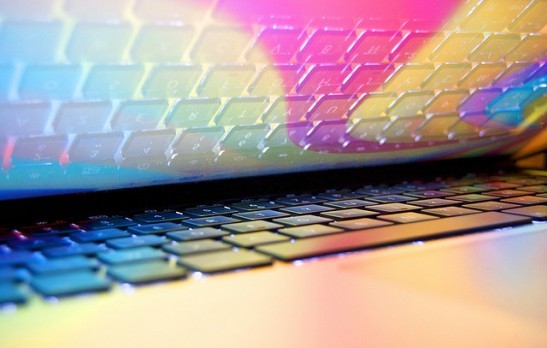The MacBook and especially the MacBook Pro have a reputation for serious speed. But if you’ve owned one, then you know that it’s not uncommon to see your Macbook running slow. Yep, even Macbooks are human. Like all technology, your computer will eventually slow and impede your daily activities and efficiency. You may end up having to get a new computer, but don’t go there until you’ve exhausted all other remedies. In this post we are going to look at the possible causes and 7 steps you can take to solve the problem.
- Check the Activity Monitor
When browsing the web, your MacBook runs all kinds of programs in the background – ones you might not even need. Check your Activity Monitor to get a glimpse into what applications are tapping your computer’s resources. To locate the Activity Monitor, perform a Spotlight search or access it from the Applications>Utilities folder. The tabs at the top illustrate different types of resource consumption (RAM, CPU, etc.).

- Close Programs You Aren’t Using
Applications like Excel and Photoshop use an inordinate amount of RAM, even when you aren’t using the programs. Close out of any applications you aren’t using to free up processing space. Restarting your MacBook and clearing the cache in your browser are like taking a vitamin and will help improve speed, too, believe it or not.
3. Adjust the Finder Menu
When you open the Finder window, the “All My Files” view opens automatically. If it’s jam packed with a large number of files, this will slow down your computer when you are in this view.
Avoid this scenario by clicking the “Finder” menu and selecting “Preferences.” Next, choose your preferred folder. Restart your computer. Notice that when you bring up the Finder window, that it no longer loads all of your files anymore. See if that doesn’t make your MacBook less congested and sluggish.
4.Uninstall Unnecessary Applications
Have programs installed that you haven’t used in months? Go through your applications list and drag those you don’t use to the trash.
5. Review Your Available Disk Space
6.Getting alerts about low disk space can be frustrating, but it’s the performance degradation that’s really the issue. If you can delete or move anything to an external drive, do it. Quick targets include the Downloads folder – filter by size to check for large items that could potentially be deleted.
7.Scan for Software Updates
Apple frequently releases software updates to help speed up your MacBook. Review the OS updates and other system upgrades that are available. And remember, some updates require a reboot, so keep that in mind as you review the list and install when it is convenient.
7. Bring it in for Maintenance
Is your MacBook Pro still under warranty? The Apple Genius Bar might be your best option. All new MacBooks come with a standard one-year limited warranty, with an option to extend with the AppleCare Protection Plan. We recommend getting your computer checked out by the Genius Bar if it’s underperforming and still under warranty. If it’s not under warranty, look for a reputable local Mac repair shop to give it a tune-up.
Sometimes that age-old tech just isn’t repairable, or worth the expense. Along with iPhones and iPads, Gazelle now sells Certified MacBooks at significantly lower cost than retail.
Technology has had wonderful benefits for society, but it has also made us an impatient people that demand everything NOW. When we complain that our MacBook Pro is running slow — well, slow is a relative term.
Still, that’s no consolation when you’re on deadline or trying to binge on Netflix, and your MacBook Pro is running very slow. We hope the seven strategies we shared with you in this post will help speed things up for you.
Because, just like you, we appreciate FAST. And remember, next time you need FAST cash, trade in your used devices at Gazelle.com.
*Gazelle’s IT specialist Dave Bergstrom contributed to this article.
Photo courtesy of Flickr
Note: this post has been updated 2/11/17 for accuracy.



